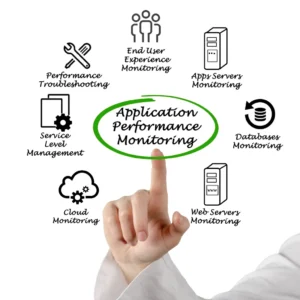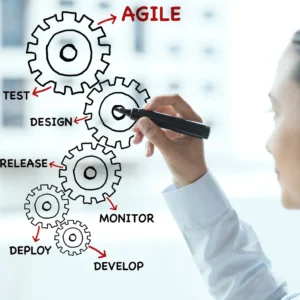
Navigating Excellence
Unveiling the Power of Documentation in Intelligent Process Automation (IPA)
Welcome to the forefront of innovation, where Documentation in Intelligent Process Automation (IPA) emerges as the cornerstone for achieving unparalleled efficiency and success.
In this rapidly evolving landscape, businesses and technical solution providers navigate the intricacies of automation, seeking a reliable guide to unlock the full potential of IPA initiatives. This article delves into documentation’s critical role in this transformative journey.
From user-friendly manuals empowering end-users to detailed technical documentation catering to developers, every aspect contributes to the precision and clarity required for seamless operations.
Join us as we explore the significance of documentation, encompassing compliance, visual aids, collaborative platforms, and change management.
Documentation stands as the key in this pursuit of excellence, illuminating the path towards optimized Intelligent Process Automation.
Documentation Standards and Best Practices
Optimizing Success: Documentation Standards and Best Practices in Intelligent Process Automation (IPA)
In Intelligent Process Automation (IPA), meticulous documentation is the linchpin for success. Establishing robust documentation standards is crucial for steering IPA initiatives towards efficiency and reliability.
Adequate documentation ensures a clear roadmap for deploying and maintaining automated processes. Consistency is critical, as standardized documentation facilitates seamless collaboration among diverse teams involved in IPA implementation.
Best practices revolve around clarity and precision. Begin with a well-defined template outlining processes, inputs, and expected outcomes. Incorporate version control to track changes, ensuring the documentation stays synchronized with evolving processes.
Regular audits and updates are imperative. Documentation should adapt to changes in processes, ensuring relevance and accuracy. This approach encourages continuous improvement, which is crucial for success in IPA’s ever-changing landscape.
By adhering to these standards and best practices, businesses can enhance transparency, mitigate risks, and empower their teams to navigate the intricacies of IPA confidently.
Process Documentation Templates
Streamlining Success: Effective Process Documentation Templates for Intelligent Process Automation (IPA)
Documentation in Intelligent Process Automation (IPA) is the cornerstone of seamless operations. Developing templates for documenting automation processes ensures clarity and consistency.
A well-crafted template should define each step, input, and expected output, creating a standardized format. This uniform structure simplifies comprehension for technical and non-technical stakeholders involved in IPA initiatives.
Consistency is paramount. Ensuring that all documentation follows the same format facilitates easy navigation and understanding. This uniformity streamlines communication across diverse teams, fostering a collaborative and efficient working environment.
By implementing robust process documentation templates, businesses can enhance transparency and comprehension, paving the way for successful Intelligent Process Automation implementations. These templates are practical tools for technical solution providers, offering a clear roadmap to navigate and optimize automated processes.
Version Control for Documentation
Navigating Precision: Version Control in Documentation for Intelligent Process Automation (IPA)
Implementing version control for documentation is paramount in the world of Intelligent Process Automation (IPA). This ensures accuracy and reliability.
Version control mechanisms track changes systematically, providing an audit trail for documentation evolution. This practice safeguards against errors, offering business and technical solution providers a clear historical record.
Protocols for tracking changes should include detailed annotations, highlighting modifications in the documentation. This meticulous approach aids in understanding the progression of IPA initiatives, facilitating collaboration and troubleshooting.
Maintaining an audit trail guarantees accountability and transparency in the documentation process. This meticulous record-keeping improves the reliability of information, serving as a valuable resource for troubleshooting and refining IPA processes.
By adhering to robust version control practices, businesses elevate the precision and integrity of their documentation, empowering both business and technical stakeholders in the successful implementation and evolution of Intelligent Process Automation.
Documentation Collaboration Platforms
Synergizing Success: Collaborative Platforms for Documentation in Intelligent Process Automation (IPA)
In the Intelligent Process Automation (IPA) landscape, leveraging collaborative platforms is pivotal for streamlined documentation processes.
Utilizing collaborative platforms fosters collective input, ensuring comprehensive and diverse perspectives in IPA documentation. This inclusivity enhances the quality and relevance of information.
Integration with project management tools is essential for seamless collaboration. This facilitates real-time updates, synchronizing documentation efforts with the progress of IPA initiatives. Streamlined communication is critical for both business and technical solution providers.
Collaboration platforms provide a centralized hub for discussions, clarifications, and updates, fostering a transparent and efficient workflow. This integration ensures that the documentation remains a living resource, adapting to the evolving needs of IPA projects.
Businesses can fortify their documentation processes by embracing collaborative platforms and integrating with project management tools. This enhances communication between business and technical teams and contributes to the overall success of Intelligent Process Automation initiatives.
User Manuals and Guides
Guiding Excellence: User Manuals and Guides in Intelligent Process Automation (IPA)
In Intelligent Process Automation (IPA), crafting user-friendly manuals and guides is paramount for success.
User manuals provide end-users with clear, step-by-step instructions for navigating automated processes. Clarity and simplicity are vital to bridge the gap between technical complexities and user comprehension.
Guides should comprehensively detail each interaction, ensuring end-users can confidently operate automated processes. This empowers both business and technical solution providers to maximize the potential of IPA implementations.
The emphasis lies in making manuals accessible and understandable to users of varying technical backgrounds. Utilizing plain language and intuitive visuals enhances the effectiveness of these guides.
Businesses can enhance the success of Intelligent Process Automation initiatives by prioritizing user-friendly manuals and guides, thereby contributing to overall efficiency and user experience. Clear instructions pave the way for seamless collaboration and utilization of automated processes.
Technical Documentation for Developers
Precision Unveiled: Technical Documentation for Developers in Intelligent Process Automation (IPA)
In Intelligent Process Automation (IPA), creating meticulous technical documentation is pivotal for developers and IT teams.
Detailed technical documentation delves into algorithms, data flows, and system architecture, offering an in-depth understanding. Clarity in these documents is crucial for both business and technical solution providers.
For developers, this documentation is a comprehensive guide detailing the intricacies of IPA implementations. It ensures streamlined collaboration and promotes effective problem-solving within IT teams.
Including information on algorithms enhances the precision of the development process, enabling developers to optimize and troubleshoot efficiently. This precision is critical to achieving excellence in implementing Intelligent Process Automation.
By prioritizing detailed technical documentation, businesses empower their developers and IT teams. This practice fosters a collaborative environment and sets the stage for the successful deployment and maintenance of Intelligent Process Automation initiatives.
Process Flow Diagrams and Visual Documentation
Clarity Visualized: Process Flow Diagrams in Intelligent Process Automation (IPA)
In the Intelligent Process Automation (IPA) domain, incorporating visual elements like flow diagrams revolutionizes process documentation.
Process flow diagrams serve as visual blueprints, elucidating complex automation workflows for business and technical solution providers. This visual representation significantly enhances understanding.
Visual documentation facilitates a quick grasp of intricate processes, fostering collaboration and knowledge sharing. It bridges comprehension gaps, ensuring effective communication across diverse teams involved in IPA implementations.
The inclusion of flow diagrams simplifies intricate details and serves as a universal language for conveying automation workflows. This clarity is essential for successful collaboration between business and technical stakeholders.
By embracing visual documentation, businesses elevate the accessibility and transparency of their IPA processes. Integrating detailed information with visual clarity becomes a cornerstone for successful Intelligent Process Automation initiatives.
Compliance and Audit Documentation
Compliance Assurance: Documentation in Intelligent Process Automation (IPA)
In Intelligent Process Automation (IPA), documentation is pivotal in ensuring compliance with industry regulations.
Creating clear protocols for documenting processes to meet compliance standards and facilitate auditing while adhering to regulations is essential.
A structured approach to documentation ensures that every step of the automated process aligns with industry standards. This mitigates risks and fosters trust among stakeholders, highlighting the commitment to regulatory compliance.
Creating documentation that facilitates auditing involves detailed records, traceability, and transparency. This meticulous approach not only aids in identifying deviations but also streamlines the auditing process for regulatory assessments.
Businesses are committed to integrity and transparency in their Intelligent Process Automation initiatives by prioritizing compliance and audit documentation. This safeguards against regulatory risks and reinforces the credibility of the automation processes in the eyes of regulatory bodies and stakeholders.
Change Management Documentation
Evolution Charted: Change Management Documentation in Intelligent Process Automation (IPA)
In Intelligent Process Automation (IPA), documenting changes to automation processes is a cornerstone for success.
Change management documentation outlines the evolution of processes over time for both business and technical solution providers. Establishing protocols for maintaining consistency in documentation during updates is essential.
A structured approach to documenting changes ensures clarity in understanding the evolution of IPA processes. This transparency aids in mitigating risks associated with updates and fosters collaboration among diverse teams.
Protocols for consistency during updates involve explicit version control and comprehensive annotations. This meticulous approach ensures that documentation accurately reflects the current state of automated processes, providing a reliable resource for stakeholders.
By prioritizing change management documentation, businesses adapt to evolving needs and maintain a clear and consistent record of their IPA initiatives. This practice contributes to the resilience and success of automation processes over time, ensuring stakeholders can confidently navigate changes.
Documentation Maintenance and Review Processes
Sustaining Excellence: Documentation Maintenance in Intelligent Process Automation (IPA)
In Intelligent Process Automation (IPA), establishing robust processes for documentation maintenance is imperative for sustained success.
Regularly reviewing and updating documentation is essential for business and technical solution providers. Protocols must be in place to ensure the accuracy and relevance of the documentation.
Documentation maintenance involves periodic reviews to reflect changes in processes accurately. This practice mitigates the risk of outdated information and ensures alignment with current automation practices.
Protocols for accuracy and relevance include comprehensive reviews, audits, and updates. Timely adjustments to documentation guarantee that it remains a reliable reference for both business and technical stakeholders.
By prioritizing documentation maintenance and adhering to meticulous protocols, businesses enhance the longevity and effectiveness of their IPA initiatives. A commitment to accuracy and relevance ensures that documentation remains a valuable asset, supporting the ongoing success of Intelligent Process Automation implementations.
Conclusion
In conclusion, the meticulous handling of Documentation in Intelligent Process Automation (IPA) emerges as the linchpin for success in this transformative landscape. Each facet plays a crucial role, from user-friendly manuals and visual diagrams that bridge comprehension gaps to detailed technical documentation catering to developers.
Integrating collaborative platforms ensures seamless cooperation, while change management documentation charts the evolution of processes over time.
Compliance and audit documentation safeguard against regulatory risks and reinforce credibility in the eyes of stakeholders.
Moreover, the establishment of structured processes for documentation maintenance is paramount. Regular reviews and updates, coupled with stringent protocols for accuracy, guarantee that documentation remains a reliable guide for both business and technical solution providers.
Embracing these practices fosters transparency, mitigates risks, and empowers teams to navigate the intricacies of IPA confidently.
Ultimately, the commitment to precision and clarity in documentation sets the stage for the sustained success of Intelligent Process Automation initiatives. In this journey towards optimization, documentation stands as the beacon, guiding businesses and technical stakeholders toward the pinnacle of efficiency and excellence in IPA.
Related Articles
- Choosing the Right Automation Tool in 7 Steps
- A 9-Step Guide to IPA Implementation: Energise Your Operations
- Navigating the Roadblocks of IPA – The Top 9 Challenges
- AI in Intelligent Process Automation – Unleash the Power of AI
- 9 IPA Examples in Small-Scale Industries
- Power of Intelligent Business Process Automation – Efficiency
- AI Business Process Management: Unleashing the Power
- Business Process Management with AI Integration
- AI for Reengineering Business Processes
- Hyperautomation: Redefining BPM with AI
- The Role of AI in Business Process Modelling
- AI-driven Customer Onboarding – Unleash the Power of AI
- Effective Process mapping in Intelligent Process Automation
- Intelligent Process Automation Adoption – The Best Strategy Guide
- TechInfra in IPA: A Comprehensive Guide
- Elevating Intelligent Automation with Continuous Improvement
- Comprehensive Approach to Cost-Benefit Analysis in IPA
- Vendor Selection in IPA – Comprehensive Guide
- Implementing Agile in Intelligent Process Automation (IPA)
- Scalability and Integration in Intelligent Process Automation
- Cognitive Automation in IPA: Innovating Ethical Efficiency
- Mastering Symphony: Bot Development in IPA Unveiled
- UI/UX Mastery in IPA: Elevating Automation Experiences
- Compliance and Security in IPA – A Guide Ensuring Trust
- Impact of Performance Monitoring and Analytics in IPA
- Driving Success: Data Management in IPA
- Crucial Role: Documentation in IPA Triumph
- Optimizing IPA – Continuous Improvement Strategies






























